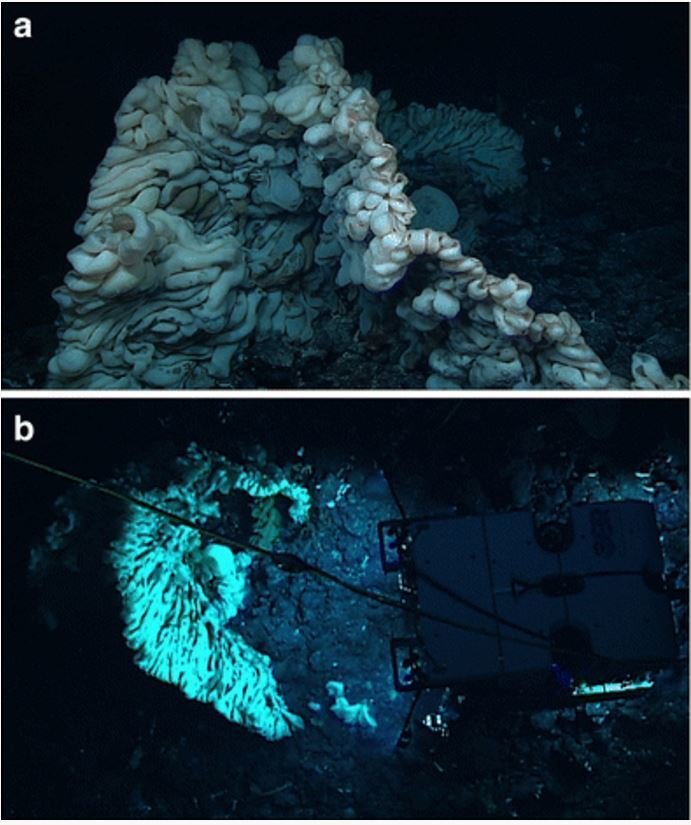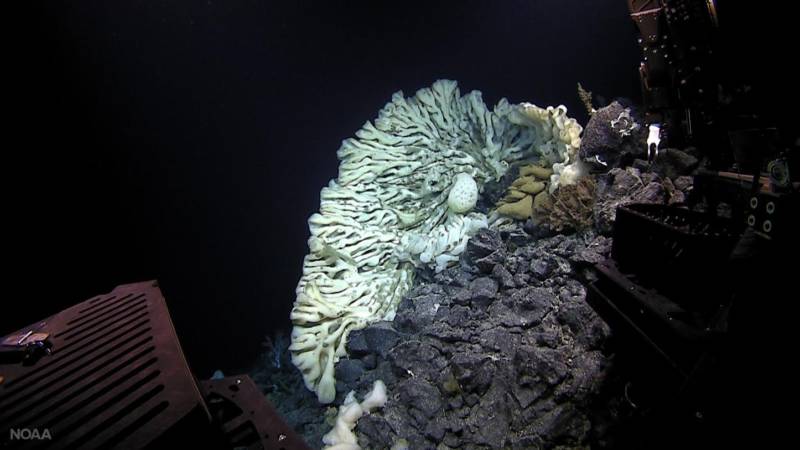The deep-sea researchers were surveying an ocean ridge off the coast of Hawaii in 2015 and amid ordinary ocean floor fare — a bit of coral, some volcanic rock — they came across something surprising.
“Where did this guy come from? Holy cow!” one researcher said to his colleague.
During the moment caught on camera, the brain-like curves of a sponge about the size of a minivan came into view. As one of the scientists exclaimed in the video, “This is the largest thing I’ve seen underwater.”
Now, a new study reports that it is the largest sponge ever documented, at about 11.5 feet long, more than 6.5 feet wide and 4.9 feet high. That’s about the size of a minivan. In the video, the researchers immediately voiced their suspicion that it could be the biggest sponge in the world.

According to the study published in Marine Biodiversity, it was discovered in the northwestern Hawaiian Islands during an expedition of the Okeanos Explorer – the “only federally funded U.S. ship assigned to systematically explore our largely unknown ocean for the purpose of discovery and the advancement of knowledge.”

9(MDAxOTAwOTE4MDEyMTkxMDAzNjczZDljZA004))